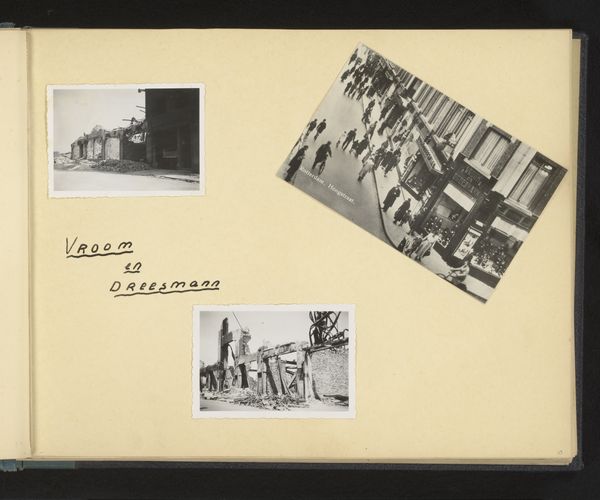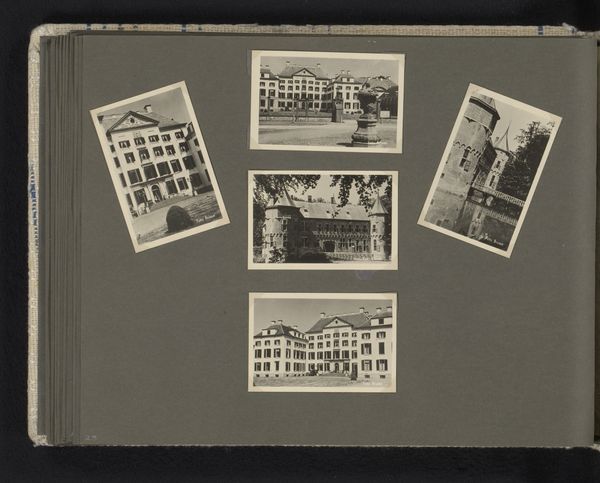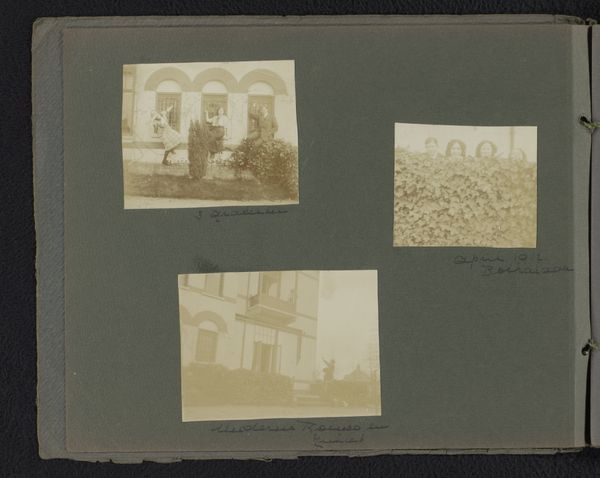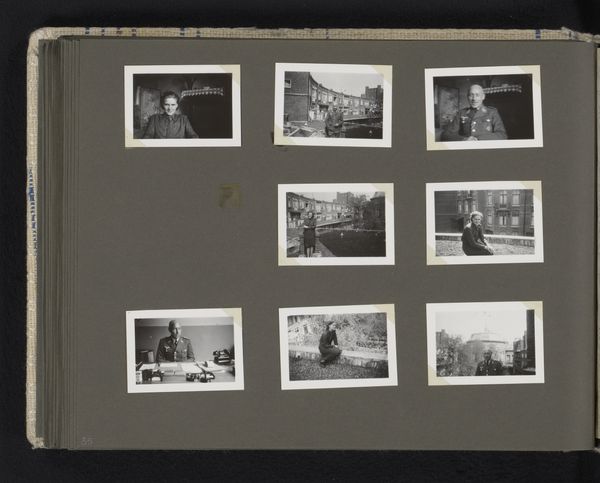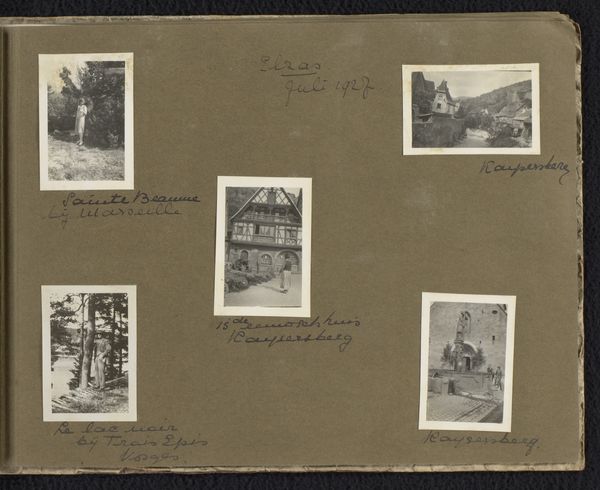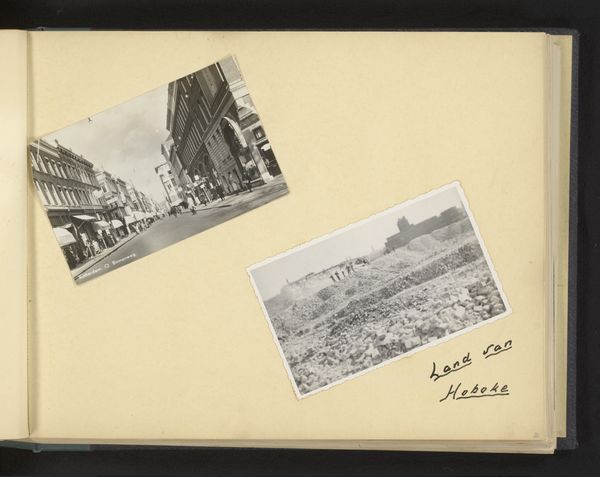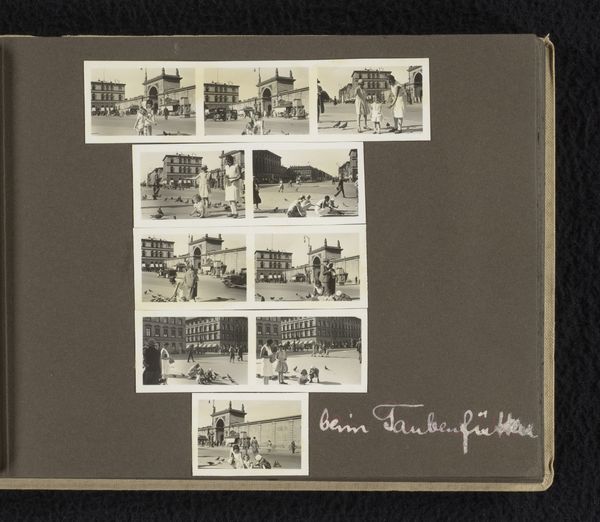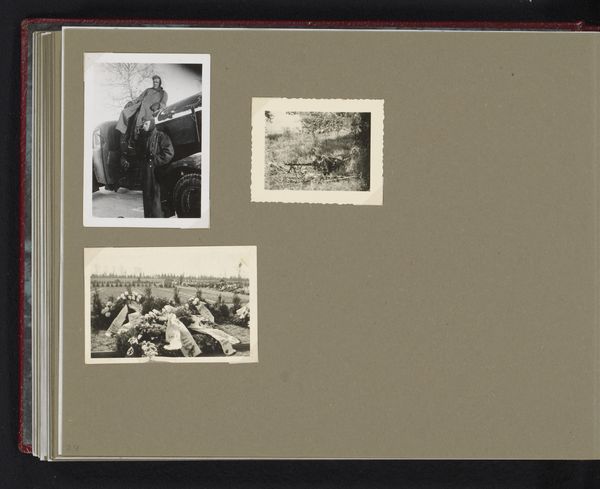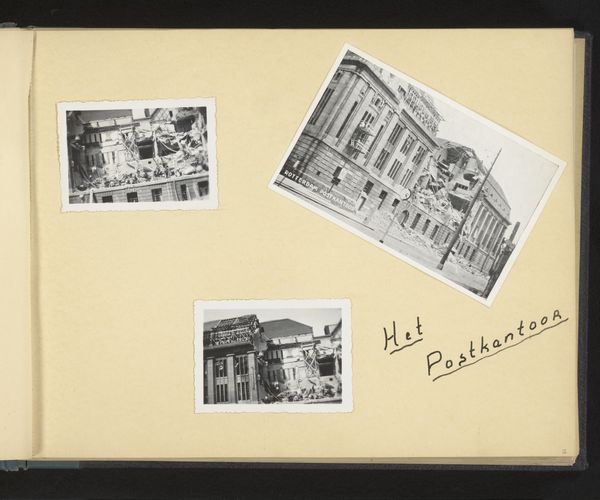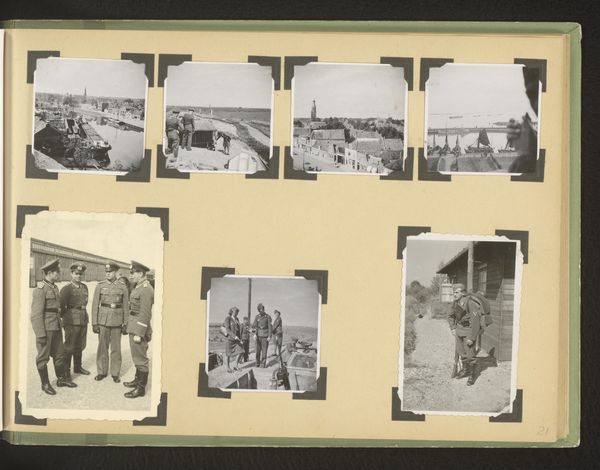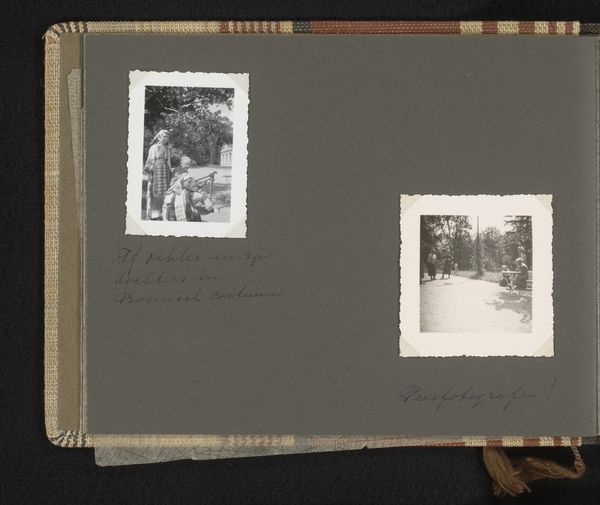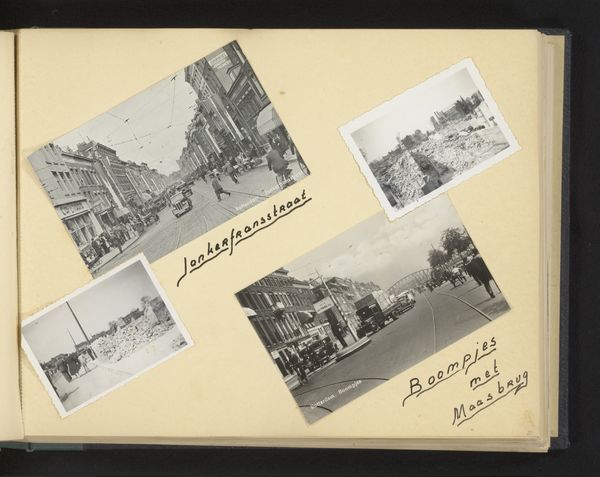
photography, gelatin-silver-print
#
street-photography
#
photography
#
gelatin-silver-print
#
cityscape
#
realism
Dimensions: height 135 mm, width 85 mm, height 237 mm, width 303 mm
Copyright: Rijks Museum: Open Domain
Editor: Here we have Alie Rondberg-Vrauwdëunt's "Tuinderstraat / Vijverhofstraat / Ooglijdersgesticht," a series of gelatin-silver prints from 1940, arranged on a page of what appears to be a photo album. The photographs document scenes of devastation. The destroyed buildings feel heavy with the weight of recent events. What's your take on this piece? Curator: Well, it's impossible to look at these photographs and not consider the socio-political context of 1940. What we're likely seeing here are images captured in the immediate aftermath of the Rotterdam Blitz in May 1940. The album format adds an interesting layer, almost domesticating the impact of what are undeniably scenes of profound destruction. How does this contrast with what you know about photography's public role during wartime? Editor: That's interesting, because I almost saw the album as a way to control the narrative. Placing these images within its pages creates a personal archive of a public trauma. Is that how the role of imagery shifted, from bearing witness to active manipulation? Curator: Exactly! Photography, during wartime especially, operates on several levels. It's both a means of documentation and a tool for shaping public opinion. These images, even in their seemingly raw state, are never entirely neutral. They're chosen, cropped, and arranged. Even the act of assembling this album – deciding what to include and what to leave out – speaks volumes about Rondberg-Vrauwdëunt's personal and perhaps political perspective. Do you agree? Editor: I do, and that brings up a further question around authorship. Are these photographs simply documents, or something more? Curator: They are both! And the interesting element for me is precisely that interplay, between the subjective gaze and historical events. Think about the kind of dialogue this particular combination of images encourages, as opposed to what would happen if each photograph was to stand alone. Editor: That's a really insightful perspective. Considering these photos in light of how museums, galleries, and political agendas influence our understanding makes it so much more complex. I am seeing the images as more active in shaping my understanding.
Comments
No comments
Be the first to comment and join the conversation on the ultimate creative platform.

